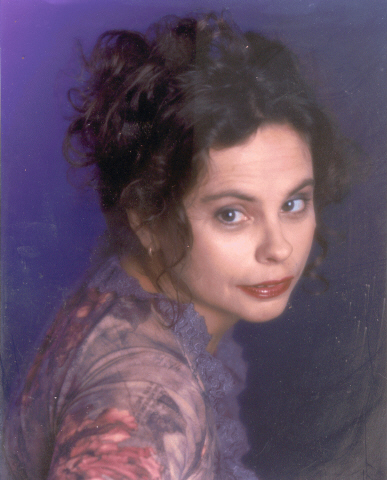


Services
An Astrological Princess
Although there is correspondence in periodicals from women students, and advertisements may be found from women practitioners, only the most zealous research will uncover published works by women in the nineteenth century. For that reason alone it seems worth reclaiming our astrological Princess - Olivia Serres.
Throughout the history of astrology we have been honoured with doctors and professors, plus occasional countesses. It has been common for those seeking fame and fortune to claim academic titles and honourable lineage. However, Olivia Serres is uniquely a British astrological princess.
On 3 June 1824 the first issue of a new weekly periodical entitled The Straggling Astrologer appeared. Costing 4d an issue, the magazine was unique in being the first weekly magazine devoted solely to astrology. Perhaps it would better have been titled The Struggling Astrologer for by issue four, the then publisher, William Charlton Wright, reduced its price to 3d, presumably to boost its flagging circulation.
By the end of July, Robert Cross Smith (Raphael) had been appointed as its editor. An announcement appeared advising readers that the magazine "has been honoured with some astrological MSS. Appertaining to the lot of individuals of the highest rank by Her Royal Highness the Princess of Cumberland...who has, we are persuaded, been most unjustly persecuted."
Who was Princess Olive? She was baptised Olivia Wilmot 3 April 1772, the daughter of Olivia Wilmot and according to her claims, Henry Frederick of Cumberland, the Duke of Cumberland. The date is commonly given as her birth date but it is thought likely that her birth took place some days before. Olivia herself gives this as her birthdate and the time of her birth as 2 06 30 am. To understand her claim to royal status we need to backtrack a little.
George III was born on 4 June 1738 in London, the eldest son of Frederick, Prince of Wales, and Princess Augusta of Saxe-Gotha. He became heir to the throne on the death of his father in 1751, succeeding his grandfather, George II, in 1760. The unsuitable secret marriages made by his brothers were what forced into being the Royal Marriages Act of 1772. Under this Act, the Sovereign must give consent to the marriage of any lineal descendant of George II, with a few exceptions. In 1811 it was acknowledged that the King was violently insane. He remained in this state until his death on January 29 1820.
Wilmot and Henry Frederick, Duke of Cumberland. The marriage, which was said to have taken place on 5 December 1774 at Leicester House, St Martin's, London, has not been proven. Or the possible marriage on 4th March 1767.The Duke of Cumberland died 18th September 1790. We do know, however, that he married Anne Lutrell, daughter of the Earl of Carhampton on 2nd October 1771.
Attempting to untangle the possible familial relationships is a nightmare. On 1st September 1791 Olivia married John Thomas Serres. Serres was Olivia's art teacher and as she was under age the two had to be married by special licence. By 1804 the couple were separated and Olivia was free to pursue a career of writing, painting and trying to be royal. She gave art lessons and exhibited her won works at the Royal Academy in 1794 and from 1804-8, and the British Institute in 1806. An involvement with the royal family began at this time as she became landscape painter to the then Prince of Wales.
In 1815 she was told by Lord Woolwich that she was the Duchess of Cumberland. Two years later she claimed to be the daughter of the Duke of Cumberland and Mrs Payne, the sister of Dr Wilmot, her legal father. She believed that she had been substituted ten days after her birth for the stillborn child of Robert Wilmot. Wilmot was responsible for performing the secret marriage.
It was no doubt a complete coincidence that in 1821 Oliva was arrested for debt and claimed exemption on the basis of her royal lineage. She appeared in court and before select committees several times with documentary evidence of her claim.
Olivia was an active pen woman. A number of her articles were signed by such pseudonyms as An Inquirer and it is under that name that her first claim was made. She wrote a novel St Julian in 1805, and her Flights of Fancy poems were published in 1806. In 1813 she published the memoirs of her legal father, Dr Wilmot, five years after his death.
By the time The Straggling Astrologer appeared in 1824, Olivia was well known in England. The popular press delighted in publishing stories of her activities and many were attracted to the fairy tale story of the Princess given away at birth. Raphael appears to have been amongst this number and convinced of her claim to royal blood.
Olivia wrote a regular column entitled Astrological Fragments. The astrology was fairly standard for the time and written well enough. Unfortunately, no scandalous revelations of royalty were included though she did take a look at the late King's horoscope. In fact she has been almost completely forgotten as an astrologer. Her claim to royal blood has gone down in history and although many historians reject it, it is a grey enough area for her to be recorded as a possible daughter of the Duke of Cumberland. Olivia was similar to Raphael in that she was a prolific writer, happy to cover a wide subject area. Her writing is unexceptional in astrological terms but she stands out as one of the few, very few women published in astrology in the nineteenth century.
She died 3 December 1834 and is interred at St James's Church, Westminster, London. Her daughter, Lavinia, continued the fight but the documents she produced as proof were found to be forgeries.